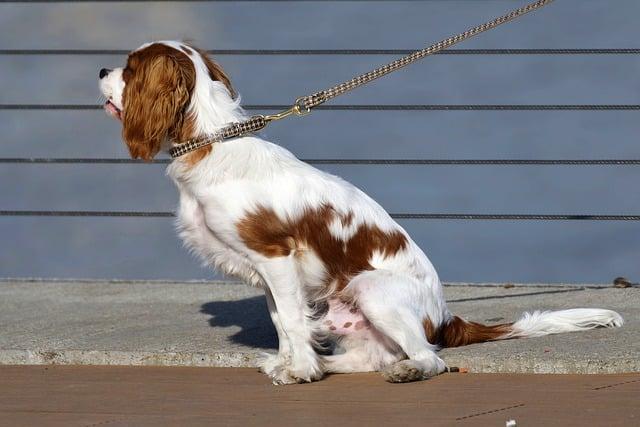Once, a devoted dog owner named Sarah faced a daunting challenge: her beloved Rocco, a spirited German Shepherd, had developed aggressive tendencies. Concerned for his safety and the well-being of others, she sought help. Through consistent training, positive reinforcement, and understanding Rocco’s triggers, Sarah transformed his behavior. With patience and dedication, Rocco became a calm, well-mannered companion. If you’re struggling with a similar issue, remember: with the right approach, you can turn aggression into harmony. Your dog deserves it!
Contents
- Understanding the Root Causes of Aggressive Behavior in Dogs
- Effective Training Techniques to Mitigate Aggression
- Creating a Safe and Controlled Environment for Your Dog
- The Importance of Professional Guidance in Managing Aggressive Behavior
- Q&A
Understanding the Root Causes of Aggressive Behavior in Dogs
To effectively address aggressive behavior in dogs, it is crucial to first identify the underlying factors contributing to this behavior. Aggression can stem from a variety of sources, including **fear**, **frustration**, and **territorial instincts**. Understanding these root causes allows dog owners to implement targeted strategies that can mitigate aggression and promote a more harmonious relationship with their pets.
One common cause of aggression is fear-based reactions. Dogs may exhibit aggressive behavior when they feel threatened or cornered. This can occur in situations where they are exposed to unfamiliar people, animals, or environments. Recognizing the signs of fear in your dog, such as cowering, growling, or baring teeth, is essential. By creating a safe space and gradually desensitizing your dog to these triggers, you can help them build confidence and reduce their aggressive responses.
Frustration can also lead to aggressive behavior, particularly in dogs that are overly excited or unable to access something they desire. This is often seen in dogs that are on a leash and react aggressively towards other dogs or people. To combat this, it is important to teach your dog impulse control through training exercises that promote calmness and patience. Techniques such as **positive reinforcement** and **reward-based training** can help redirect their energy and reduce frustration-induced aggression.
Lastly, territorial instincts can play a significant role in aggressive behavior. Dogs are naturally protective of their home and family, and this can manifest as aggression towards perceived intruders. To manage this behavior, it is essential to establish clear boundaries and rules within your household. Socialization is also key; exposing your dog to various environments, people, and other animals can help them learn appropriate responses to new situations, ultimately reducing their territorial aggression.
Effective Training Techniques to Mitigate Aggression
Understanding the root causes of aggression in dogs is crucial for effective training. Many aggressive behaviors stem from fear, anxiety, or territorial instincts. By identifying triggers, you can tailor your training approach to address these specific issues. **Observing your dog’s body language** and reactions in various situations will help you pinpoint what causes their aggression. This awareness allows you to create a more focused training plan that targets the underlying issues rather than just the symptoms.
Positive reinforcement is a powerful tool in modifying aggressive behavior. Instead of punishing your dog for aggressive actions, reward them for calm and non-aggressive responses. This could include treats, praise, or playtime when they remain calm in situations that previously triggered aggression. **Consistency is key**; ensure that all family members apply the same training techniques to avoid confusing your dog. Over time, this approach helps your dog associate previously stressful situations with positive outcomes, reducing their aggressive tendencies.
Desensitization and counter-conditioning are effective techniques for addressing specific triggers. Gradually expose your dog to the source of their aggression at a distance where they feel safe, and reward them for remaining calm. **Slowly decrease the distance** over time, ensuring that your dog remains comfortable throughout the process. This method helps them learn that the presence of the trigger does not lead to negative consequences, fostering a more relaxed demeanor in the face of their fears.
Incorporating structured socialization into your training regimen can also play a significant role in reducing aggression. Expose your dog to a variety of environments, people, and other animals in a controlled manner. **Supervised playdates** with well-behaved dogs can help your dog learn appropriate social cues and behaviors. Additionally, enrolling in obedience classes can provide a safe space for your dog to interact with others while under the guidance of a professional trainer. This exposure not only builds confidence but also reinforces positive behaviors, ultimately leading to a more balanced and less aggressive dog.
Creating a Safe and Controlled Environment for Your Dog
Creating a secure and controlled environment for your dog is essential in addressing aggressive behavior. A well-structured space helps your dog feel safe and reduces anxiety, which can often trigger aggression. Start by establishing a designated area in your home where your dog can retreat when feeling overwhelmed. This space should be free from distractions and noise, allowing your dog to relax and regain composure.
In addition to a safe space, consider implementing **consistent routines** that help your dog understand what to expect throughout the day. Regular feeding times, walks, and play sessions can provide a sense of stability. Dogs thrive on predictability, and knowing when they will engage in activities can alleviate stress. Incorporate **positive reinforcement** techniques during these routines to encourage good behavior and strengthen your bond.
Another crucial aspect of a controlled environment is managing interactions with other pets and people. Monitor your dog’s behavior closely and intervene if you sense any signs of aggression. Use **baby gates** or crates to create boundaries when necessary, ensuring your dog feels secure while still being part of the family. Gradually introduce your dog to new experiences, allowing them to acclimate at their own pace, which can significantly reduce the likelihood of aggressive outbursts.
Lastly, consider the importance of **mental stimulation** in preventing aggressive behavior. Boredom can lead to frustration and aggression, so provide your dog with engaging toys, puzzles, and training exercises. Regularly challenge your dog’s mind through obedience training or agility courses, which not only keeps them occupied but also reinforces positive behaviors. By fostering a safe and stimulating environment, you can effectively mitigate aggressive tendencies and promote a happier, more balanced dog.
The Importance of Professional Guidance in Managing Aggressive Behavior
When dealing with aggressive behavior in dogs, seeking professional guidance is crucial for both the safety of the pet and the well-being of the owner. A qualified dog trainer or behaviorist possesses the expertise to assess the underlying causes of aggression, which can range from fear and anxiety to territorial instincts. By understanding these root issues, professionals can tailor a behavior modification plan that addresses the specific needs of the dog, ensuring a more effective and humane approach.
Professional trainers utilize a variety of techniques that are grounded in positive reinforcement, which not only helps in curbing aggressive tendencies but also fosters a stronger bond between the dog and its owner. This method encourages desirable behaviors through rewards, making it more likely for the dog to respond positively. Additionally, trainers can provide valuable insights into body language and communication cues, enabling owners to better understand their pets and prevent potential triggers of aggression.
Moreover, engaging with a professional can significantly reduce the risk of injury to both the dog and others. Aggressive behavior can escalate quickly, leading to dangerous situations that may result in bites or attacks. By working with an expert, owners can learn how to manage their dog’s behavior safely and effectively, ensuring that they can navigate social situations without fear. This proactive approach not only protects the community but also promotes a more positive image of dog ownership.
the emotional support and guidance provided by professionals can be invaluable for owners who may feel overwhelmed or frustrated by their dog’s aggressive behavior. A trainer can offer reassurance, strategies, and ongoing support, helping owners to remain committed to the training process. This partnership not only aids in the dog’s rehabilitation but also empowers owners, equipping them with the tools and confidence needed to foster a harmonious living environment.
Q&A
-
What are the common causes of aggressive behavior in dogs?
Aggressive behavior in dogs can stem from various factors, including:
- Fear or anxiety
- Protectiveness over territory or resources
- Pain or medical issues
- Lack of socialization
Understanding the root cause is essential for effective intervention.
-
How can I identify if my dog is being aggressive?
Signs of aggression in dogs can include:
- Growling or barking
- Snapping or biting
- Stiff body posture
- Showing teeth or raised hackles
Recognizing these signs early can help prevent escalation.
-
What steps can I take to stop my dog’s aggressive behavior?
To effectively manage and reduce aggression, consider the following strategies:
- Consult a professional dog trainer or behaviorist
- Implement positive reinforcement techniques
- Provide regular socialization opportunities
- Ensure your dog receives adequate exercise and mental stimulation
Consistency and patience are key to achieving lasting results.
-
When should I seek professional help for my dog’s aggression?
It’s crucial to seek professional assistance if:
- Your dog has bitten someone or another animal
- The aggression is escalating or becoming more frequent
- You feel overwhelmed or unsure about handling the situation
- There are underlying medical issues that need to be addressed
Early intervention can prevent serious incidents and improve your dog’s behavior.
addressing aggressive behavior in dogs requires patience, consistency, and professional guidance. By implementing these strategies, you can foster a safer environment for both your pet and those around them. Invest in your dog’s well-being today!

大家好,我是彼得潘,專業的手法身體治療師。我喜歡探索和研究各種主題,並透過與人工智慧的合作分享專業、實用、有趣的文章。我們定期進行人工審核,以確保內容的準確性。如果您發現文章中有任何不準確的地方,請隨時與我們聯繫,我們會及時糾正。您可以透過 [email protected] 與我們聯繫。



